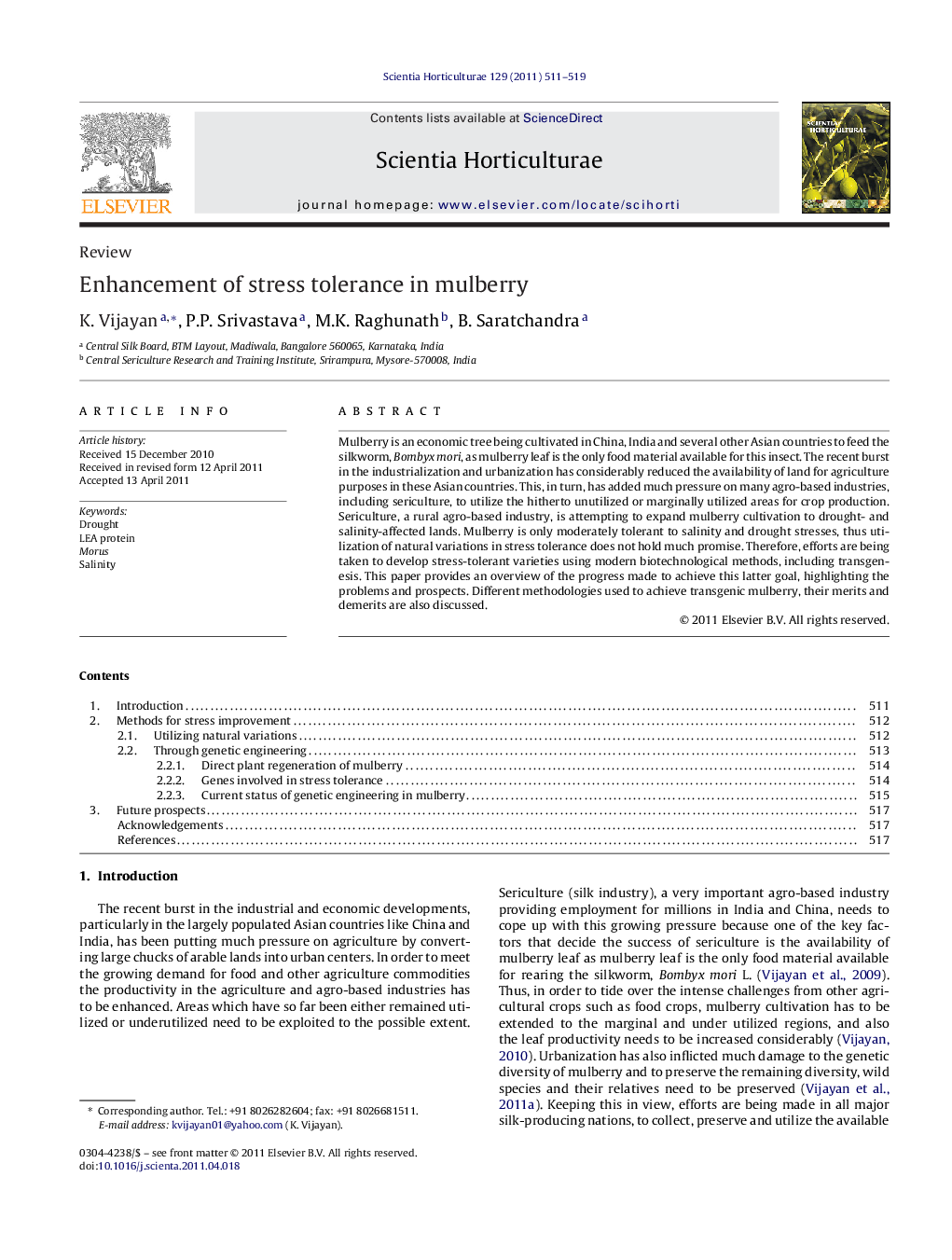| Article ID | Journal | Published Year | Pages | File Type |
|---|---|---|---|---|
| 4567986 | Scientia Horticulturae | 2011 | 9 Pages |
Mulberry is an economic tree being cultivated in China, India and several other Asian countries to feed the silkworm, Bombyx mori, as mulberry leaf is the only food material available for this insect. The recent burst in the industrialization and urbanization has considerably reduced the availability of land for agriculture purposes in these Asian countries. This, in turn, has added much pressure on many agro-based industries, including sericulture, to utilize the hitherto unutilized or marginally utilized areas for crop production. Sericulture, a rural agro-based industry, is attempting to expand mulberry cultivation to drought- and salinity-affected lands. Mulberry is only moderately tolerant to salinity and drought stresses, thus utilization of natural variations in stress tolerance does not hold much promise. Therefore, efforts are being taken to develop stress-tolerant varieties using modern biotechnological methods, including transgenesis. This paper provides an overview of the progress made to achieve this latter goal, highlighting the problems and prospects. Different methodologies used to achieve transgenic mulberry, their merits and demerits are also discussed.
► Mulberry is one of the important trees in Asia. ► Mulberry is moderately tolerant to salinity and drought stresses. ► Natural variability for stress tolerance is less in mulberry. ► Transgenesis has been used widely to enhance stress resistance in mulberry. ► This paper provides an overview of the progress and problem of transgenesis in mulberry.
